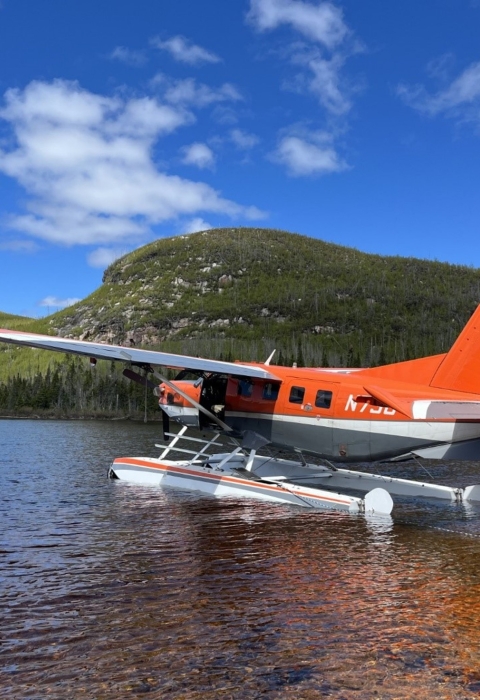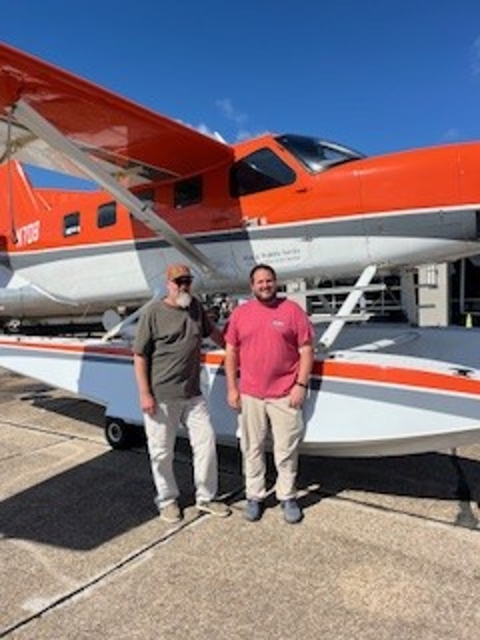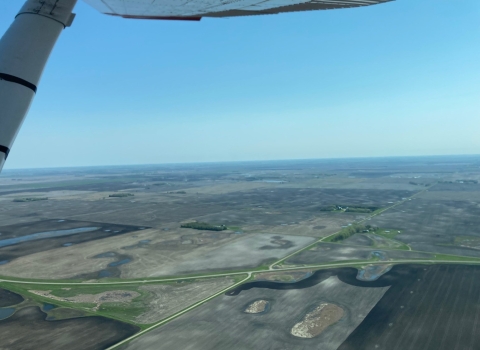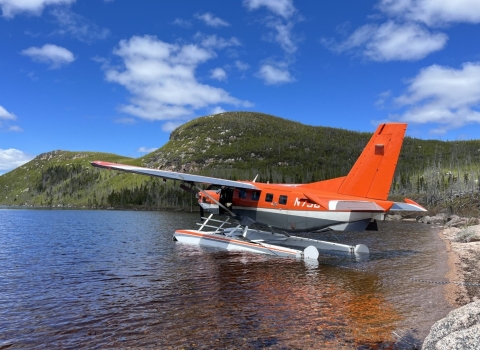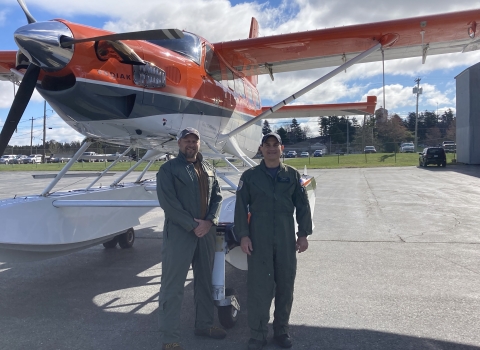This waterfowl survey season is another special one for me, as I have the privilege of flying with an observer who has served as one of my mentors since my early college years: Mr. Pat Stinson, Refuge Manager at Little River National Wildlife Refuge in Oklahoma. Pat gave me my first (and second!) proverbial “foot in the door” with the U.S. Fish and Wildlife Service’s Migratory Bird Program while I was working as a technician for him at Red River National Wildlife Refuge in Louisiana. He was able to secure a slot for me to go on a waterfowl banding detail, and it was during this assignment that I knew I wanted to join the ranks as a biologist/pilot. Pat also afforded me subsequent opportunities to serve as an aerial observer for the midwinter waterfowl surveys. It’s been quite a reward having Pat onboard, and I continue to tap into his wealth of knowledge!
I recall sitting in this same hotel room in Inuvik, Northwest Territories, one year ago penning our experiences with drought and wildfires across the survey area. Unfortunately, the drought only worsened through 2023 and early 2024. In fact, most of the survey area experienced its driest winter in over 50 years. The bad news: available nesting habitat for waterfowl has significantly decreased. The majority of surveyed habitat was best characterized as “poor.” In addition, some early season wildfires ignited, displacing residents of several communities in Alberta and British Columbia. There was, however, some good news to deliver: afternoon showers were abundant in much of northern Alberta, northeastern British Columbia, and the southwestern portion of the Northwest Territories since mid-May. In fact, the much-needed precipitation aided wildland firefighters to the point that many of the wildfires that were threatening communities were assigned “under control” status. We were grateful of this development and know that rainfall continued to serve as the reprieve the communities and firefighters desperately needed.
While the rain showers served to provide at least temporary relief from wildfire ignition throughout the survey area, not enough precipitation has fallen to replenish those seasonal wetlands upon which many species of breeding waterfowl depend. The characteristically dependable “bush country” we surveyed will likely realize less recruitment than in more “normal” wetter years. However, dry years such as this are essential for the long-term health and productivity of seasonal wetlands. I am optimistic that this abnormal year will serve to bolster the integrity of wetlands, and I look forward to seeing the habitat again in 2025.
